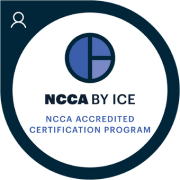EM 2020 LLSA Reading List
Acute Diarrheal Disease
Acree M, Davis AM. Acute diarrheal infections in adults. JAMA 2017 Sep;318(10):957-8.
- ___________________ is not recommended for routine acute diarrheal infection or mild traveler-associated diarrhea.
- Disabling traveler-associated diarrhea with fever should be treated with ___________________.
- In patients receiving antibiotics for traveler-associated diarrhea, use ___________________ to decrease duration of diarrhea and increase chance of cure.
Acute Myocardial Infarction
Anderson JL, Morrow DA. Acute myocardial infarction. N Engl J Med 2017 May;376(21): 2053-64.
- For a patient with a STEMI, when PCI is delayed by more than ___________________, fibrinolytic therapy should be administered if it is not contraindicated.
Child Abuse
Berkowitz CD. Physical abuse of children. N Engl J Med 2017 Apr;376(17):1659-66.
- Retinal hemorrhages are reported in approximately ___________________% of children with abusive head trauma.
- Physically abused children, particularly ___________________, may present with nonspecific symptoms and signs, such as ___________________; the possibility of abusive head trauma requires consideration in such cases.
Lower Gastrointestinal Bleed
Gralnek IM, Neeman Z, Strate LL. Acute lower gastrointestinal bleeding. N Engl J Med 2017 Mar;376(11):1054-63.
- Colonoscopy should be the initial procedure for most patients presenting with acute lower gastrointestinal bleeding. It should generally be performed within ___________________ after presentation, after hemodynamic resuscitation and colon cleansing.
- Hematochezia in the context of hemodynamic instability may represent an upper gastrointestinal bleeding event; therefore, ___________________ should be considered.
Necrotizing Soft-tissue Infections
Stevens DL, Bryant AE. Necrotizing soft-tissue infections. N Engl J Med 2017 Dec;377(23): 2253-65.
- Survival, among patients with necrotizing soft-tissue infections, is significantly increased among patients taken to surgery within 24 hours after admission as compared with those in whom surgery is delayed for more than 24 hours. Survival is further increased with ___________________.
Nonpenetrating Eye Injuries in Children
Root JM, Gupta S, Jamal N. Nonpenetrating eye injuries in children. Clinical Ped Emerg Med 2017 Mar;18(1):74-86.
- In the pediatric population, admission to the hospital is recommended if there is penetrating ocular trauma, secondary hemorrhage, suspected child abuse, hyphema greater than ___________________%, risk of a noncompliant family, or patients with ___________________.
- In non-verbal patients, careful attention should be paid to ___________________ that confirms light perception.
Opioid Prescribing Patterns
Osborn SR, Yu J, Williams B, Vasilyadis M, Blackmore CC. Changes in provider prescribing patterns after implementation of an emergency department prescription opioid policy. J Emerg Med 2017 Apr;52(4):538-46.
- Implementation of an ED prescription opioid policy was associated with a ___________________ in total opioid prescriptions and in the number of pills per prescription.
- The improvements were sustained ___________________ years after the intervention. Decreases were seen in all major opioids (hydrocodone, oxycodone, hydromorphone, and codeine). The number of pills per prescription also decreased ___________________%.
Pediatric Airway
Sulton CD, Taylor TR. The pediatric airway and rapid sequence intubation in trauma. TraumaReports 2017 Nov.
- The pediatric airway differs greatly from the adult airway: It is ___________________ and ___________________. This can lead to a challenging direct visualization.
- ___________________ is a precursor to cardiac arrest in children. ___________________ is necessary prior to securing an airway.
- Nondepolarizing paralytic agents, such as ___________________, are increasing in popularity in pediatric emergency medicine because of their shorter half-life and more favorable safety profile.
Pediatric Shock
Mendelson J. Emergency department management of pediatric shock. Emerg Med Clin North Am 2018 May;36(2):427-40.
- ___________________ is usually the preferred vasopressor in pediatric shock, especially in ___________________ fluid refractory shock.
- In shock, for rapid fluid administration it is suggested that the “___________________” method be strongly considered.
- Regarding goal directed therapy for shock, the American College of Critical Care Medicine recommends targeting a Sv02 of ___________________% or greater.
Reversal of Dabigatran
Gottlieb M, Khishfe B. Idarucizumab for the reversal of dabigatran. Ann Emerg Med 2017 May;69(5):554-8.
- Idarucizumab is a monoclonal antibody fragment specifically directed at dabigatran that binds to the thrombin site with ___________________ times greater affinity than thrombin, resulting in a near-irreversible binding until ___________________.
- Given the ___________________ half-life of dabigatran, it is also important to consider the ___________________ of the last dose.
Safety of Magnetic Resonance Imaging
Nazarian S, Hansford R, Rahsepar AA, Weltin V, McVeigh D, Gucuk Ipek E, et al. Safety of magnetic resonance imaging in patients with cardiac devices. N Engl J Med 2017 Dec;377(26):2555-64.
- In 1189 scans of 1509 patients, ___________________% of all MRI’s were performed without the occurrence of an event (power-on reset or early termination of the examination).
- The most common notable change in device parameters from baseline were decreases in ___________________ and increases in ___________________, ___________________, and ___________________.
Spinal Cord Compression
Ropper AE, Ropper AH. Acute spinal cord compression. N Engl J Med 2017 Apr;376(14):1358-69.
- As many as ___________________% of spinal injuries affect more than one level.
- For spinal epidural abscess, the ___________________ spine is most often affected.
- The most common pathogen cultured from the blood or the spinal epidural abscess is ___________________, evenly split between ___________________ and ___________________ organisms.
Thrombectomy for Stroke
DEFUSE 3 Investigators. Thrombectomy for stroke at 6 to 16 hours with selection by perfusion imaging. N Engl J Med 2018 Feb;378(8):708-18.
- Endovascular therapy plus standard medical therapy was associated with a ___________________ favorable distribution of disability scores on the modified Rankin scale at 90 days compared to standard medical therapy alone.
- Regarding safety outcomes, mortality at 90 days was ___________________% in the endovascular therapy group versus ___________________% in the medical therapy alone group.
Click to see all answers
- Empirical antimicrobial therapy is not recommended for routine acute diarrheal infection or mild traveler-associated diarrhea.
- Disabling traveler-associated diarrhea with fever should be treated with azithromycin.
- In patients receiving antibiotics for traveler-associated diarrhea, use adjunctive loperamide therapy to decrease duration of diarrhea and increase chance of cure.
- For a patient with a STEMI, when PCI is delayed by more than 120 minutes, fibrinolytic therapy should be administered if it is not contraindicated.
- Retinal hemorrhages are reported in approximately 85% of children with abusive head trauma.
- Physically abused children, particularly infants, may present with nonspecific symptoms and signs, such as vomiting or apnea; the possibility of abusive head trauma requires consideration in such cases.
- Colonoscopy should be the initial procedure for most patients presenting with acute lower gastrointestinal bleeding. It should generally be performed within 24 hours after presentation, after hemodynamic resuscitation and colon cleansing.
- Hematochezia in the context of hemodynamic instability may represent an upper gastrointestinal bleeding event; therefore, upper endoscopy should be considered.
- Survival, among patients with necrotizing soft-tissue infections, is significantly increased among patients taken to surgery within 24 hours after admission as compared with those in whom surgery is delayed for more than 24 hours. Survival is further increased with earlier surgical intervention (e.g., within 6 hours).
- In the pediatric population, admission to the hospital is recommended if there is penetrating ocular trauma, secondary hemorrhage, suspected child abuse, hyphema greater than 50%, risk of a noncompliant family, or patients with sickle cell disease or trait.
- In non-verbal patients, careful attention should be paid to reflex contraction of the eyelid that confirms light perception.
- Implementation of an ED prescription opioid policy was associated with a significant reduction in total opioid prescriptions and in the number of pills per prescription.
- The improvements were sustained 2.5 years after the intervention. Decreases were seen in all major opioids (hydrocodone, oxycodone, hydromorphone, and codeine). The number of pills per prescription also decreased 15%.
- The pediatric airway differs greatly from the adult airway: It is shorter and more anterior. This can lead to a challenging direct visualization.
- Hypoxia is a precursor to cardiac arrest in children. Preoxygenation is necessary prior to securing an airway.
- Nondepolarizing paralytic agents, such as rocuronium, are increasing in popularity in pediatric emergency medicine because of their shorter half-life and more favorable safety profile.
- Epinephrine is usually the preferred vasopressor in pediatric shock, especially in cold fluid refractory shock.
- In shock, for rapid fluid administration it is suggested that the “push-pull” method be strongly considered.
- Regarding goal directed therapy for shock, the American College of Critical Care Medicine recommends targeting a Sv02 of 70% or greater.
- Idarucizumab is a monoclonal antibody fragment specifically directed at dabigatran that binds to the thrombin site with 350 times greater affinity than thrombin, resulting in a near-irreversible binding until renal excretion.
- Given the short half-life of dabigatran, it is also important to consider the timing of the last dose.
- In 1189 scans of 1509 patients, 96% of all MRI’s were performed without the occurrence of an event (power-on reset or early termination of the examination).
- The most common notable change in device parameters from baseline were decreases in p-wave amplitude and increases in atrial capture threshold, right ventricular capture threshold, and left ventricular capture threshold.
- As many as 20% of spinal injuries affect more than one level.
- For spinal epidural abscess, the thoracic spine is most often affected.
- The most common pathogen cultured from the blood or the spinal epidural abscess is Staphylococcus aureus, evenly split between methicillin resistant and methicillin sensitive organisms.
- Endovascular therapy plus standard medical therapy was associated with a more favorable distribution of disability scores on the modified Rankin scale at 90 days compared to standard medical therapy alone.
- Regarding safety outcomes, mortality at 90 days was 14% in the endovascular therapy group versus 26% in the medical therapy alone group.



